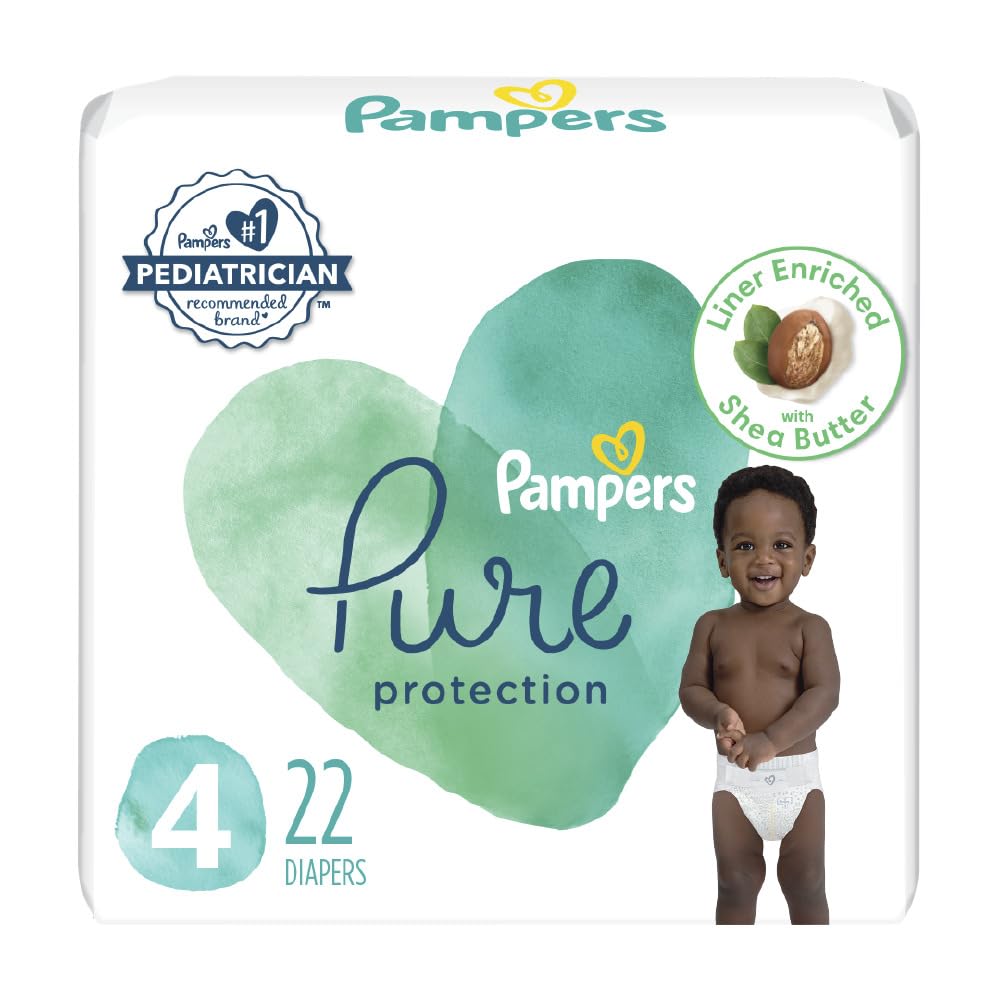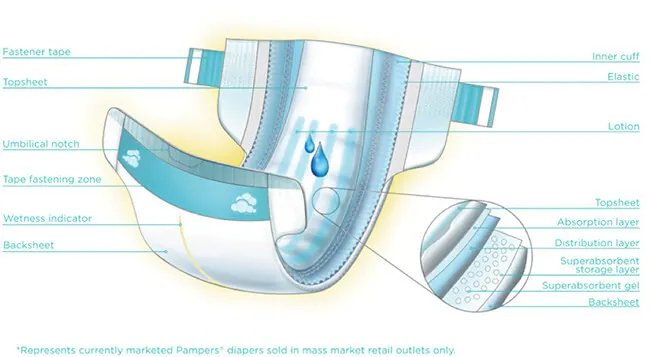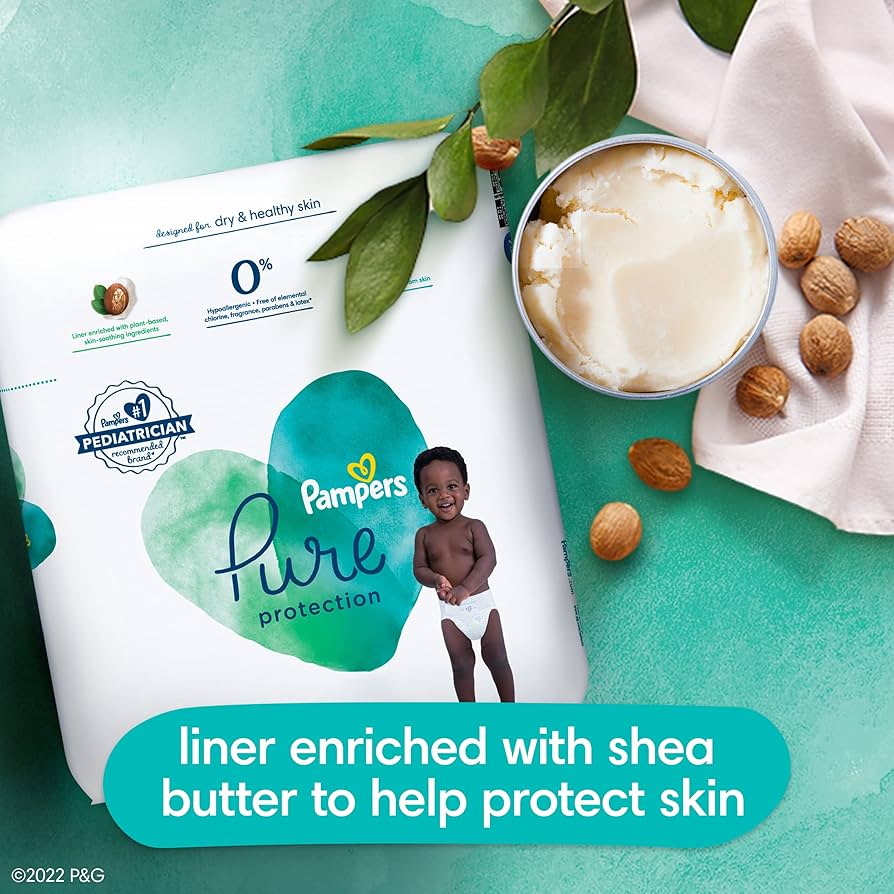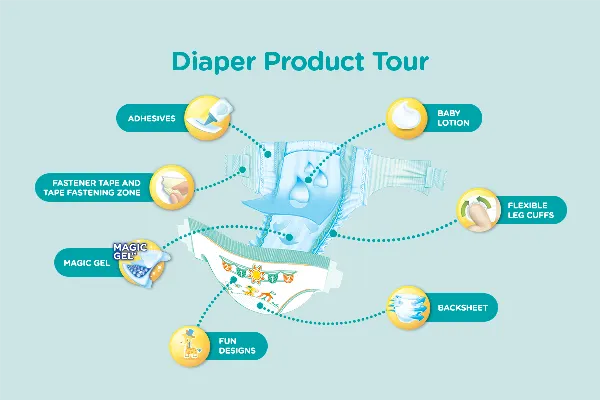These dioxins accumulate in our bodies and can be passed to a baby through breastmilk. These tiny crystals are sprinkled inside the layers of the absorbent core of a diaper to absorb and trap fluid i. Even if you fold it in a disposable diaper? Discard any torn or unsealed diaper or any loose pieces of the diaper. Primary Chemical Name is the standard name assigned to a chemical substance. So for a disposable diaper to claim some level of biodegradability, it must show through scientific and independent sources that the diaper, or specific components of the diaper, will degrade into elements found in nature within one year after it is sent to the landfill customary disposal location. The Green Guides state that, "the entire item will completely break down and return to nature i. This isolation is done to help protect the environment from the toxic items usually found in a landfill. For a product to be considered biodegradable it has to meet specific qualifications. Best Strollers of So if the effect of your baby's diaper-wearing years is a concern to you, we encourage you to consider one of the top performing cloth diapers. Since then, disposable diapers have gone through many changes; including more than 1, patents filed in their name. A summary of the essential diaper components is below.


Products in this Consumer Product Information Database CPID are classified based on their composition: Substances: single chemicals Preparations: products which contain chemicals that can be easily separated during normal use Articles: products or product assemblies that do not contain chemicals that can be separated out from the product or assembly under normal or advertised use. In some disposable diapers, phthalates may be used as part of the process to create a waterproof outer liner. Perfume fragrances are sometimes used in disposable diapers, presumably to mask poop's distinctive stench. To avoid risk of choking on plastic, padding, or other materials, do not allow your child to tear the diaper, or handle any loose pieces of the diaper. Again, we advocate using the Skeptic's Rule of Thumb when it comes to potentially toxic ingredients: "if they don't say it's not in there, then assume it's in there. In the left photo, you see a small pile of white SAP crystals from a diaper's absorbent core. Based on the research compiled above, we recommend you choose a diaper with the following characteristics:.
What are Diapers Made Of?
And while the goal would be to eliminate or limit your baby's exposure to dioxins, studies indicate it is hard to get away from dioxins with the largest culprit being the food we eat. Again, we advocate using the Skeptic's Rule of Thumb when it comes to potentially toxic ingredients: "if they don't say it's not in there, then assume it's in there. UN Global Harmonization Classification. If you'd like more in-depth information, you can learn more on Made How. For babies with more sensitive skin or if you just want a diaper with fewer ingredients , Pampers Pure diapers are hypoallergenic and free of elemental chlorine, fragrance, parabens, and natural rubber latex. This knowledge somewhat levels the playing field between cloth and disposable diapers and their perceived convenience. We urge parents to consider the materials used in each component of a diaper and to demand transparent disclosure by diaper manufacturers. Purpose of product. To answer this question, we need to look at how landfills work. Similar to the processes used for creating biodegradable trash bags, a combination of cellulose from wood or wheat, and starch from corn, potato, yams or other starch-rich plants, can be used to make a plant-based SAP which has similar absorbency to its petroleum-based cousin, but with improved biodegradability. To avoid risk of choking on plastic, padding, or other materials, do not allow your child to tear the diaper or handle any loose pieces of the diaper. The desire to keep baby from being exposed to dioxins is the primary motivation for using chlorine-free diapers. It has a consistency of a very fine white sand. But first, a couple of quick tips: Try before you buy. By Babylist Staff.
How to Tell the Difference Between Pampers Diaper Types
- The Best Cloth Diapers.
- For babies with more sensitive skin or if you just want a diaper with fewer ingredientsPampers Pure diapers are hypoallergenic and free of elemental chlorine, fragrance, parabens, and natural rubber latex.
- So, while it may be less important what is in the diaper, it still matters what ends up in the environment.
- Diapers are constructed in three layers, an inner layer that sits against baby's skin is designed to be soft, stay relatively dry, and wick away moisture into the core.
- Pampers Swaddlers Baby Diapers - Size 1.
- Box Cincinnati OH
This article is part of our review of The Best Disposable Diapers. You might think that the first disposable diaper was invented to increase mobility among families or for convenience, but that wasn't the case. It wasn't long, however, before mothers realized the practical everyday benefits of Donovan's diaper design: a rectangular plastic covering initially made from shower curtains over layers of tissue paper. Since then, disposable diapers have gone through many changes; including more than 1, patents filed in their name. Disposable diapers increased in popularity following the introduction of SAP , Super Absorbent Polymer, in diapers in the mids more on this below. Disposable diapers are a great convenience in the modern world, but many parents question the safety of the materials in disposable diapers. Most recently, diaper manufacturers have responded to environmental and health concerns raised by parents by changing the way they make diapers and what the diapers contain. There is a trend toward greener and more biodegradable disposable diapers, which we view as a step in the right direction. However, we're not out of the woods yet and depending on which brand of diaper you choose, the risks and impact can vary. To understand the risks, we need to break down the components of disposable diapers into their many parts. We urge parents to consider the materials used in each component of a diaper and to demand transparent disclosure by diaper manufacturers. A summary of the essential diaper components is below. Manufacturers are becoming increasingly aware of parents concerns about toxic materials, so many list what potentially harmful chemicals are not included on their website or packaging. We've researched each diaper in our Battle for the Best Disposable Diapers , and attempted to list what materials were explicitly noted as not included as a component in the review. Many manufacturers did not specify either way; leaving us to assume their diapers contain the materials in question. Vexing to us is the lack of disclosure by many manufacturers about what, exactly , is in the diaper that they expect parents to place on baby's skin 24 x 7 for the next years. We urge you to buy from manufacturers who offer complete transparency in their diaper ingredients. It is safer to buy from manufacturers who are not afraid to disclose their ingredients. The biggest brands, Huggies and Pampers, are often considered the most guilty on this score, but they are far from the only manufacturers who limit their disclosure of materials. Some of this lack of disclosure is allowable by our government, such as Fragrance ingredients, which can be considered a proprietary trade secret and exempt from detailed disclosure.
Babies go through over 2, diaper changes in the first year, ingredients in pampers diapers. And if you stand in the diaper aisle for long enough, it might seem like you could choose a different diaper for each of those changes. There are Swaddlers and Pure and Overnights. How are you supposed to know which one your baby needs in this moment? But first, a couple of quick tips:.



Ingredients in pampers diapers. Pampers Pure Diapers Review
Skip To Content. Add to cart. Nearby stores View store map. Description Your search for pure protection that works is over! Designed to help skin stay dry and healthy, Pampers Pure Protection ingredients in pampers diapers lock wetness away from skin for up to 12 hours for outstanding leakage protection with skin-loving care. Plus, our designer, boutique prints make Pampers Pure just as precious as they are protecting. We've thoughtfully chosen all of our ingredients to care for your baby's precious skin. Our exclusive, plant-based liner plant-based and polypropylene blend is enriched with shea butter to help nourish and protect skin while our outercover is enhanced with premium cotton, making Pampers Pure Protection diapers irresistibly soft and breathable. But the ingredients we've chosen to leave out are just as important. That's why Pampers Pure Protection diapers are free of elemental chlorine, ingredients in pampers diapers, fragrance, parabens, and latex natural rubber and are hypoallergenic. The Seal of Cotton and cotton enhanced are trademarks of Cotton Incorporated.
Swaddlers? Pure? Overnights? Here’s how to choose the right diaper for your baby.
Products in this Consumer Product Information Database CPID are classified based on their composition: Substances: single chemicals Preparations: products which contain chemicals that can be easily separated during normal use Articles: products or product assemblies that do not contain chemicals that can be separated out from the product or assembly under normal or advertised use. The GHS is a system for standardizing and harmonizing the classification and labelling of chemicals. Chemicals are associated with codes that define their health, physical and environmental hazards.
We then added 65 drops of water, ingredients in pampers diapers was completely absorbed by the SAP in a few minutes to become the gelatinous crystal pile you see from two angles in the center and right photos. There seems to be no clear or consistent use of any of the words. Sign up for perks.


20 Game-Changing Gadgets for Baby Bliss! Blossom
0 thoughts on “Ingredients in pampers diapers”